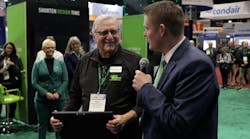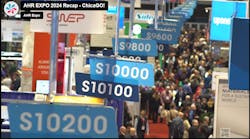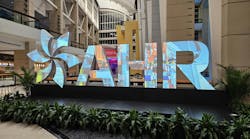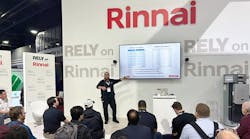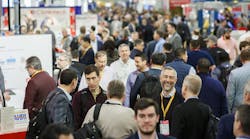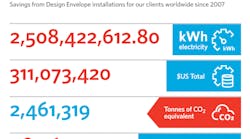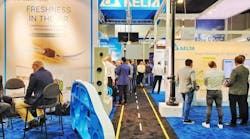During its annual International Air-Conditioning, Heating, Refrigerating Exposition (AHR Expo) press briefing Jan. 28 in Chicago, Danfoss discussed four megatrends impacting the HVACR industry: the hydrofluorocarbon (HFC) phasedown, increasing utility peak loads, changing energy use in buildings, and a widening workforce gap.
Mark Menzer, director of public affairs, discussed the path to achieving the next level of efficiency, which he suggested will come from a whole-building-system approach because the industry is reaching a point of diminishing returns regarding the energy efficiency of discrete components. Menzer also highlighted aggressive activity on the part of the U.S. Department of Energy (DOE), including 19 new energy-efficiency rules it has planned for 2015, all of which focus on components instead of systems.
Jeff Staub, application engineering manager, underscored the importance of a whole-building-system approach by examining some existing technologies, including variable-speed, oil-free, magnetic-bearing compressors.
Many available high-efficiency technologies, such as variable speed, are underdeployed, causing changing energy use in buildings to be a significant challenge for the industry, Danfoss North America President John Galyen explained. Mike Schwartz, chief executive officer of Daikin Applied Americas, elaborated on this point: “Owners are commonly not aware of how their system is operating. In fact, over 70 percent of rooftop units are still not running properly.”
Daikin Applied was the first to meet the DOE’s Rooftop Energy Challenge with its Rebel product, which achieves an 84-percent energy savings above ANSI/ASHRAE/IES Standard 90.1, Energy Standard for Buildings Except Low-Rise Residential Buildings.
“The demand for high-efficiency equipment is increasing, including variable-speed equipment that not only matches the load, but also can be tied to a smarter grid and respond to peak events,” Galyen said. “The focus is not only on new buildings—and can’t be if we want to make a measurable impact. New buildings represent only 1 percent of the building stock.”
To that point, Gene Ameduri, president of Enerlogics Networks, an organization focused on intelligent technology solutions for energy efficiency, demand response, energy supply, renewable power, and facility operations, discussed a retrofit project at U.S. Steel Tower in Pittsburgh. The central plant for the 64-story commercial office building had two 3,500-ton chillers and one 1,500-ton chiller, as well as two 1,600-bhp boilers. The retrofit consisted of 12 200-hp variable-frequency drives (VFDs) applied on supply-air fans and 12 25-hp VFDs applied on return-air fans. The project had a demand savings of 1,260 kW and an energy savings of 6,729,000 kW, which yielded a seven-month payback. A Pennsylvania Act 129 incentive contributed another $225,000 in savings for a total project payback of less than three months.
